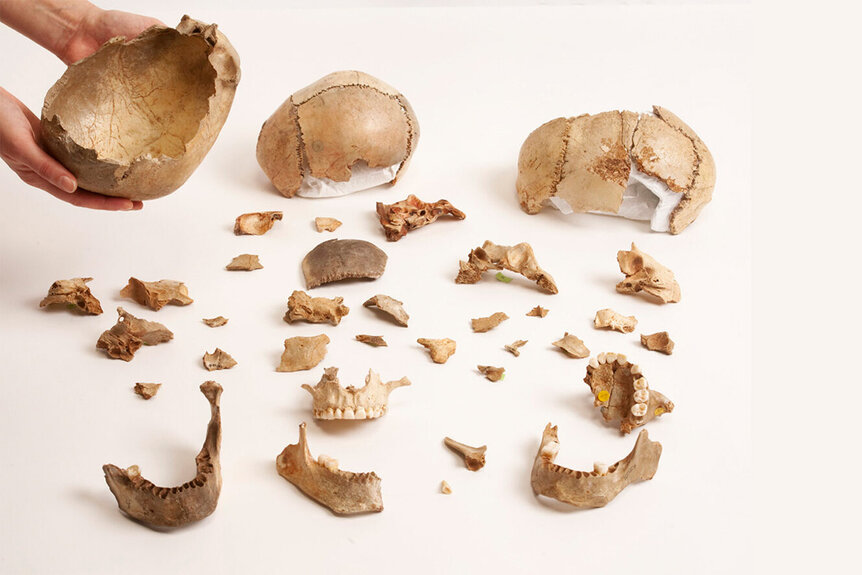Create a free profile to get unlimited access to exclusive videos, sweepstakes, and more!
Instead of Burying Their Dead, Ancient Europeans Ate Them!
For early humans, funeral practices were a matter of taste.

Edgar Wright’s 2004 horror comedy Shaun of the Dead (streaming now on Peacock) takes viewers on an always hilarious, often tragic, and sometimes horrifying journey through a zombie apocalypse. Throughout the movie’s 99-minute runtime, we see countless shambling dead rise up to eat the living in the quiet town of Crouch End, in North London.
About 150 miles away (240 kilometers) and roughly 15,000 years earlier, the people living in what would one day become England had flipped the script and were busily eating their dead. A new study published in Quaternary Science Reviews finds that humans living in Europe at the time commonly consumed the deceased not as survival strategy but as a way to honor them.
Ancient Humans Regularly Ate the Dead
Do you want to be buried, cremated, or consumed? These days, the concept of eating another person is so taboo that we make movie monsters based on the idea, but roughly 15,000 years ago during what’s known as the late Upper Paleolithic, that wasn’t the case. In fact, for some groups of people living in Europe at the time, cannibalism was the go-to method of caring for the dead.
RELATED: George A. Romero's Final Zombie Movie Might Finally Happen - Catch Up on the Franchise Now
Researchers focused on the Magdalenian peoples who lived all across Europe between about 11,000 and 17,000 years ago. Sites can be found all over what is now France, Germany, Spain, Russia, the United Kingdom, Belgium, Poland, the Czech Republic, and Portugal, but the story begins at a specific site at Gough’s Cave on the western coast of England.
Previous research at the cave uncovered three modified human skulls which researchers believe were used as drinking vessels. The skulls had parts removed and other parts plugged up, seemingly in an effort to make them better at holding water. Researchers also found more than 100 other human bone fragments with evidence of human tooth marks. The new study looked at dozens of sites from both Magdalenian and Epigravettian (a separate cultural group living at the same time) sites all across Europe and confirmed that the behavior at Gough’s Cave was not unique and cannibalism was a widespread funereal practice among certain groups.
Of 59 total sites researchers analyzed, 13 showed evidence of funereal cannibalism while others exhibited what we would consider to be more conventional burial practices. Over time, as different groups moved into the area cannibalism fell away as the favored way of disposing of the dead, seemingly replaced with burial.
“To contextualize Gough’s Cave better, we reviewed all archaeological sites attributed to the Magdalenian culture. During the terminal time period of the Paleolithic, you actually see a turnover in both genetic ancestry and funerary behavior, indicative of population replacement as Epigravettian groups migrated northwards. We believe that the change in funerary behavior identified here is an example of demic diffusion where essentially one population comes in and replaces another population and that brings about a change in behavior.”
If things had been different, if the Magdalenians had won that early culture war, we might still be eating our lost loved ones today. All things considered, we’re grateful that modern funerals call for a shirt and tie instead of a bib and fork.
Catch Shaun of the Dead and a swarm of other great zombie flicks, streaming now on Peacock!




























